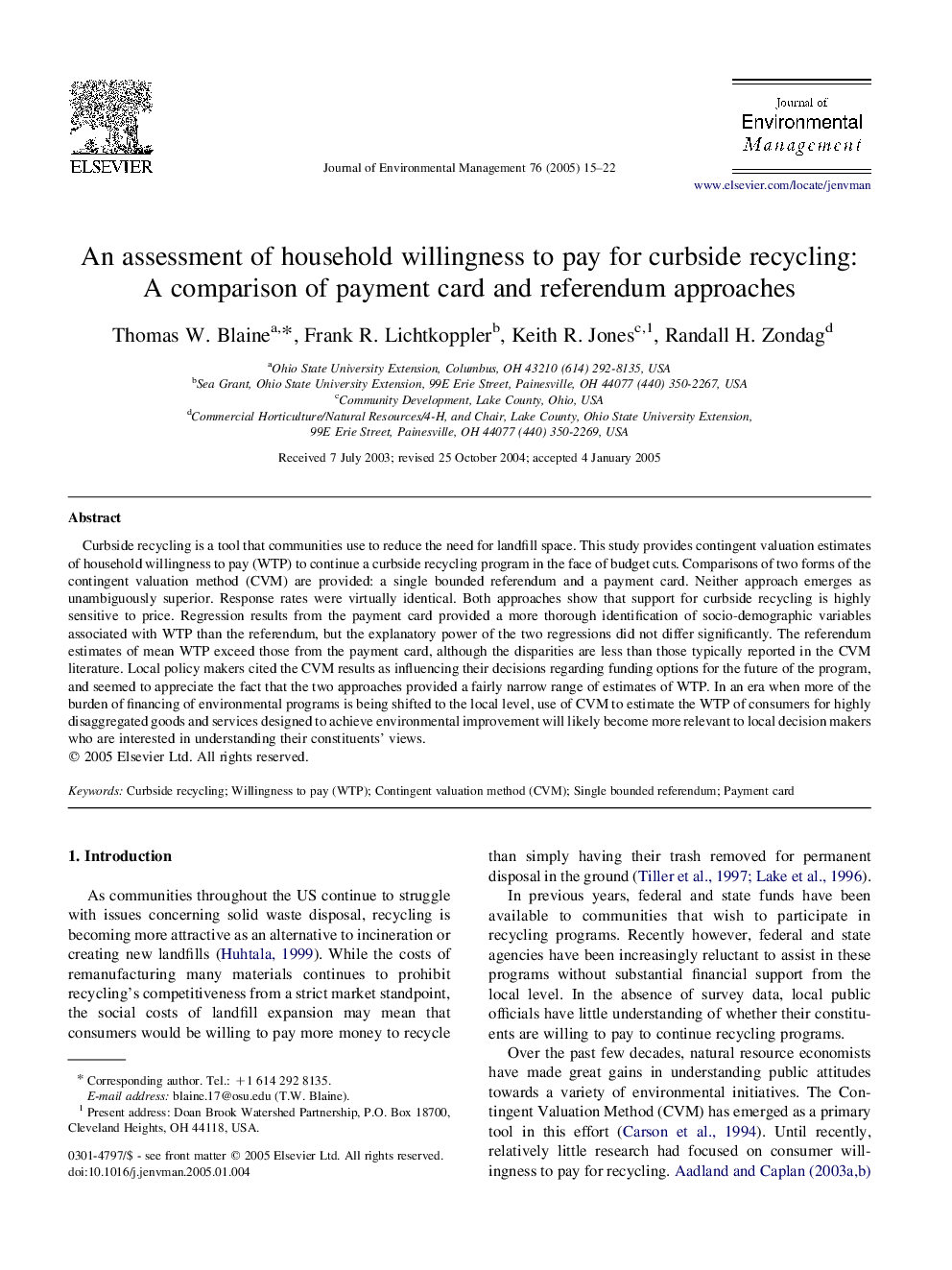| Article ID | Journal | Published Year | Pages | File Type |
|---|---|---|---|---|
| 10505836 | Journal of Environmental Management | 2005 | 8 Pages |
Abstract
Curbside recycling is a tool that communities use to reduce the need for landfill space. This study provides contingent valuation estimates of household willingness to pay (WTP) to continue a curbside recycling program in the face of budget cuts. Comparisons of two forms of the contingent valuation method (CVM) are provided: a single bounded referendum and a payment card. Neither approach emerges as unambiguously superior. Response rates were virtually identical. Both approaches show that support for curbside recycling is highly sensitive to price. Regression results from the payment card provided a more thorough identification of socio-demographic variables associated with WTP than the referendum, but the explanatory power of the two regressions did not differ significantly. The referendum estimates of mean WTP exceed those from the payment card, although the disparities are less than those typically reported in the CVM literature. Local policy makers cited the CVM results as influencing their decisions regarding funding options for the future of the program, and seemed to appreciate the fact that the two approaches provided a fairly narrow range of estimates of WTP. In an era when more of the burden of financing of environmental programs is being shifted to the local level, use of CVM to estimate the WTP of consumers for highly disaggregated goods and services designed to achieve environmental improvement will likely become more relevant to local decision makers who are interested in understanding their constituents' views.
Related Topics
Physical Sciences and Engineering
Energy
Renewable Energy, Sustainability and the Environment
Authors
Thomas W. Blaine, Frank R. Lichtkoppler, Keith R. Jones, Randall H. Zondag,
